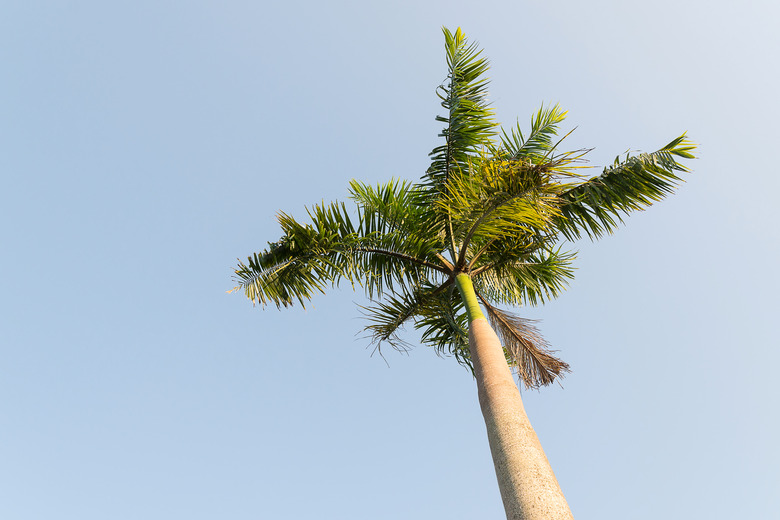Foxtail Palm Diseases
We may receive a commission on purchases made from links.
The foxtail palm (Wodyetia bifurcata, USDA zones 10-11) is a spectacular palm, so named because each graceful leaf looks like a green plume fox tail. Foxtail palm diseases are an all-too-common part of nurturing one of these palms, though many are avoidable. Native to Australia, this palm is grown around the world in a variety of landscapes. The foxtail is resistant to many pests and diseases but is vulnerable to some diseases primarily related to climate and maintenance.
Foxtail Palm Climate Damage
Foxtail Palm Climate Damage
Classed as a rare palm, the foxtail was named after Wodyetia, an Australian Aboriginal bushman who knew the palm culture and habitat. The native habitat for this palm is a well-drained, sandy and dry climate. It thrives in sunbelt areas and is especially popular in Florida and other parts of the deep South.
Foxtail palms don't belong in any climate that regularly experiences frost. When planted in cold climates or wet soils, the palm develops fungal disease such as crown rot or root rot and dies. Crown rot symptoms include fronds turning brown and the center stalk dying. Root rot develops when the roots are water-logged too long. These diseases can be avoided by cultivating the foxtail palm in sub-tropical climates and on well-drained soils.
Foxtail Palm Leaf Blight
Foxtail Palm Leaf Blight
Leaf blight is a common issue among palms, include the foxtail. The foxtail palm has a slender trunk topped by arching fronds.When the palm is young, fronds may be infected with leaf spot that becomes blight. Early spots are usually brown with a yellow halo. The fungus spreads and kills the young frond leaflets. Fungal disease in foxtail palms may be linked to iron deficiency, though it's hard to identify the cause by sight. Treatment is to severely prune the fronds, treat with fungicide and add iron-corrective nutrients.
Sometimes, brown spots on the leaves of a foxtail palm are caused by wet foliage as a result of overhead watering or too much moisture in the air. The foxtail palm thrives in many conditions and adapts to indoor botanical gardens and outdoor walkways. The palm also grows well in patio tubs, around decks and along sidewalks. It is vulnerable to brown spot fungal infections caused by overhead watering or by sprinkling in these environments. Increase air circulation by keeping the plants well-spaced to encourage ventilation.
Other Diseases Affecting Foxtail Palms
Other Diseases Affecting Foxtail Palms
Foxtail palms are susceptible to iron and potassium deficiencies that make them at risk for disease. The treatment is a slow-release iron or potassium fertilizer. These palms are resistant to Lethal Yellowing, a rapidly spreading disease fatal to many palms.
Benefits of Growing Foxtail Palms
Benefits of Growing Foxtail Palms
Despite the possibility of disease, foxtail palms continue to be a popular choice for gardeners in warm climates because they're easy to grow, tolerate a wide range of soils and grow in full sun to part shade. They have a tidy appearance and do not need frond pruning. The foxtail palm is salt tolerant and thrives in temperate coastal climates. Plants remain healthy with proper watering, good drainage and palm-friendly fertilizers. From its small Australian origins, this plant has adapted to worldwide popularity.
